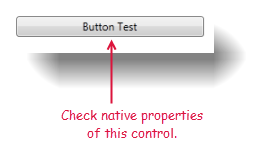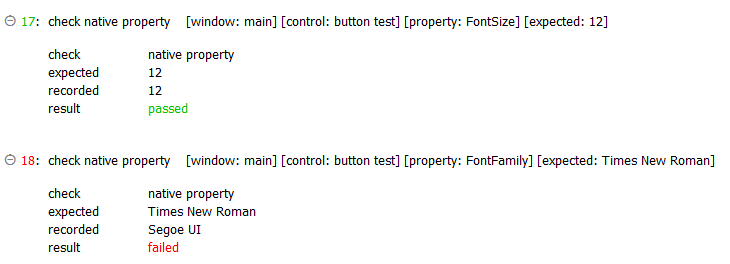check native property
Check the value of a native property of a control against an expected value.
| Name | Description | Type | Modifier |
|---|---|---|---|
| window | TA name of the window. | Interface Entity | None |
| control | TA name of the control. | Interface Element | None |
| property | Native property of the control. | String | None |
| expected | Expected value of the property. | String | None |
Result is Passed if the values match, otherwise Failed.
This action may be used within the following project items: test modules and user-defined actions.
This action is applicable to the following controls: button, check box, checklist, clock, combo box, datetime, frame, label, list box, list view, menu, password, picture box, progress bar, radio button, rating bar, richtext, scroll bar, separator, spin, status bar, tab control, table, text box, toggle button, toolbar, trackbar, tree view, window and calendar.

window control property expected
check native property main button test FontSize 12
check native property main button test FontFamily Times New Roman

- Although TestArchitect provides access to native properties, you should use it very carefully. Because accessing native properties can perform critical or unsafe operations in the AUT that may change the AUT's current state.
- property argument: You can find native properties in the Native Properties tab of the Interface Viewer.

- The expected argument can accept regular expressions. Note that argument values that include regular expressions must be entirely enclosed in curly braces {}. As an example,
{[A-Z0-9._%+-]+@[A-Z0-9.-]+\.[A-Z]{2,4}}specifies the pattern for an acceptable email address. More simply,.*represents the general wildcard for regular expressions, so that{.*arch.*}matchesstarch,marching,testarchitect, etc. - This action supports the <ignore> modifier. If the string
<ignore>is present as the value of any of the arguments, or any argument contains an expression that evaluates to<ignore>, the action is skipped during execution.